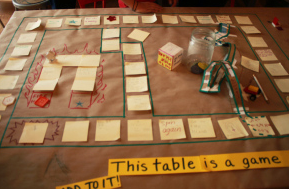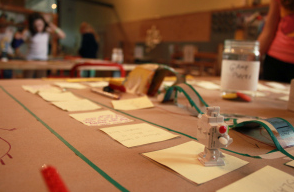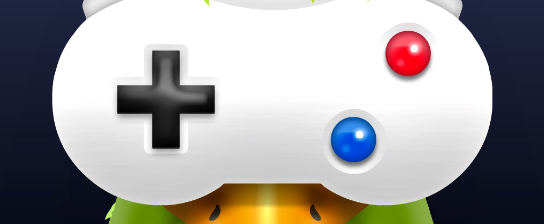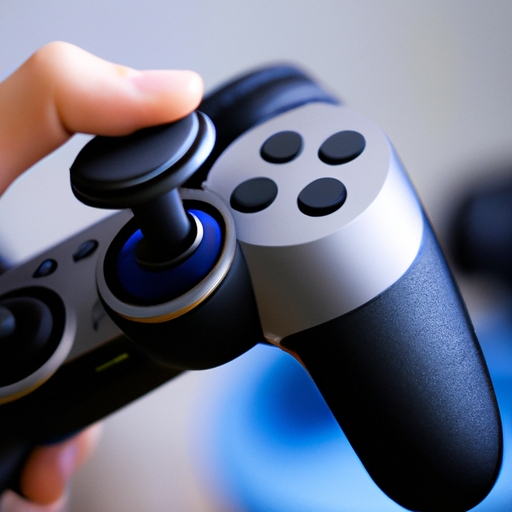Looking to have a good time with your pals and fam? Why not create your own board game? It’s the ultimate way to have a blast! With some thought and imagination, you can create a cool game that everyone will enjoy. This article will show you how to do it from scratch, so let’s get started!
First, you need to come up with a game idea. Think about what kind of theme or story would be fun for players. Then, figure out how the game should work – what pieces you need, how many buddies can play, and how long each turn should take. Once you’ve got these ideas down, it’s time to start creating the board and pieces. You need images that fit your theme and rules that are clear so everyone understands how to play. After making a rough draft of your game, try it out with your friends or family to make sure the rules are understandable and everything works well. Finally, if there are any problems or changes needed in the rules or how the game functions, take some time to adjust them until they’re perfect!
Working on Your Game Concept
Now that you’ve outlined your project, it’s time to get specific about your game concept. Spend some time brainstorming ideas for rules, goals, and components; this step is super crucial in making a great board game. Think about what makes a game awesome – one that people will want to play again and again. Choose components wisely; they should be sturdy and able to handle lots of play. A good balance of quality and cost is the trick!

The next step is to figure out the gameplay mechanics – how the game works. This includes stuff like rolling dice, cards, tokens, etc., plus any special rules you might add into your design. The aim here is to make the game fun for players and ensure all the pieces fit together seamlessly. To keep gameplay fair, think about how players can interact with each other without giving one person an advantage.
Finally, it’s vital to consider how players win or lose the game. This could be reaching a certain score before everyone else or collecting certain items first– get imaginative! You’ll also need to work out if there are any alternate endings or scenarios for different outcomes of play depending on what happens during the game. With all these things in mind, you’re ready to start making your own board game from scratch!
Designing the Board and Pieces
To start designing your board game, you’ll need to plan out a layout for the board. Think about where each piece should go and how the player will move around the board. Also, pick a theme or setting for your game that will guide its design and rules. Lastly, make sure to create rules and mechanics for how players interact with the pieces on the board, as well as strategies for winning or losing the game.
Creating the Layout
Making the layout of a tabletop game is a key step in creating an engaging and playable game. Looking at symmetry, judging complexity, and creating interesting routes are all crucial things to consider when designing the board. Using a grid system or template can help you make a balanced visual layout for your game pieces, as well as a clear path for players to move along. Experiment with different shapes and sizes until you find one that suits your game’s theme and strategy. Think about how the shape of the board will impact player movement, as well as how it will interact with any special cards or tokens used in play.
With this basic structure, you can then start adding details like color accents or texture changes to make the board design more interesting and challenging. For example, if you have multiple playing surfaces on your board, consider adding clear markers like arrows or symbols that show which way each surface should be rotated to follow the set play pattern. Similarly, look at ways you can tweak aspects of terrain like hills and valleys within each space on your board so that it presents unique challenges while still being symmetrical overall. The possibilities are endless!
Choosing a Theme

Picking a theme for your tabletop game is a fun way to bring your idea to life, so let’s dive in! With tons of possibilities for storytelling themes and pop culture references, it can be overwhelming. Take some time to think about what kind of story you want your game to tell. Consider if it should have its own unique setting or if you’d like to use existing characters and places for inspiration. Will there be any fantasy elements? Is it based on real-world events or places? Be sure to consider how the theme will affect the gameplay mechanics – historical accuracy may require more complex play rules, while simple card games are quick to understand and pick up. By exploring all these possibilities, you’ll be able to choose a theme that truly comes to life in the game you create.
Designing Rules and Mechanics
Now you’re ready to bring your theme to life by designing the rules and mechanics of your game – a chance to create something really unique! You’ll need to think hard about the game balance, and how you can set up reward systems for players.
Start with clear goals that all players have to aim for and consider adding levels or extra points for achieving certain goals during play. This will help create engaging gameplay while also giving players a sense of progress. Also, think about how you can encourage cooperation between players to make sure everyone is having a blast. Once you have these elements sorted, it’s time to start fleshing out the actual mechanics of your board game. Think about what kind of interactions are possible between pieces on the board, how many turns each player gets per round, as well as any special cards or dice rolls that may be needed to progress in the game. With some thoughtful consideration and creative problem-solving, you should be able to craft a game experience that’s both fun and challenging for everyone!
Making a Prototype
Now that you’ve laid the groundwork, it’s time to get crafty and create a rough version of your game. Remember, this is just a rough draft; it doesn’t have to be perfect, but it should give you an idea of how the game will look and function. You can use whatever materials you want for your rough version, from cardboard pieces cut into shapes to 3D-printed plastic pieces. Just make sure all your materials are sturdy enough for testing. You also need to consider the cost of making such a rough version – some materials may require special equipment or tools, which can add up quickly.
When making a rough version, it’s important to keep track of every step so you can repeat the process later if needed. Think about how many components are being used and plan out what they’ll look like ahead of time. That way you can ensure each piece is as consistent as possible when assembling the whole game board. Also, consider how long it takes for each component to be made so you know how much time you’ll need for assembly later on.
It’s also helpful to take notes during each stage so you can review them later and make any necessary changes before moving forward with production. This applies not just to the rough version but also when creating rules and mechanics – having clear notes will save time in the long run!
Fine-Tuning Your Rules and Mechanics
Getting the rules and mechanics of your game just right is key for a fun play experience, so take the time to refine them for maximum enjoyment! Balance difficulty and consider flow by testing out different scenarios with friends or family. Can they finish a round in a reasonable amount of time?
Frequently Asked Questions
What’s it gonna cost to make a board game?

Making a board game? Gotta look at costs and see if it’s worth it. Think about what you’re gonna spend on stuff like game pieces, artwork or design help. Don’t forget the printing bill! Once you’ve added it all up, you’ll see what you gotta put into it to get it going. But with some smart planning and doing your homework, you’ll make sure it’ll pay off in the end.
What legal stuff do I need to worry about when making a board game?
If you’re thinking about making a board game, you gotta know the legal stuff. You don’t want someone to rip off your game, so it’s important to know about licensing and patent rights. Where you’re at might have different rules about trademarks and copyrights for board games. Do your homework before you start so you know you’re all set and your game is protected.
Can I make a ton of copies of my board game?
So you’ve got a killer board game and want to make a bunch. You gotta think about what price makes sense and protect your game – super important for any business. When figuring out how to make and sell your game, think about how big you want to go; this will guide your pricing and sales decisions. With some careful planning, research, and thinking outside the box, you can get your board game going!
What software can I use to design a board game?
Making a board game is a breeze with all the online tools you can use. Doesn’t matter if you’re making a complicated strategy game or a chill card game for the family, these software options can help your design process go smooth and quick. From making graphics to testing gameplay, digital tools make it super easy to bring your game to life faster than ever.
How do I keep my game from being ripped off?
Got a board game that you don’t want someone to copy? You gotta know about patent and copyright laws to keep your game safe. To get the best protection, think about getting a patent or registering a copyright with the U.S. Copyright Office. These steps will make sure your cool ideas and designs are protected, giving you peace of mind while you build success for your game.
Wrap-up
You did it! You made your own board game. Now for the best part: playing it! Try it out with your buddies and family, get their thoughts, and tweak the rules until you’ve got something you’re proud of. Who knows, maybe your game will be a hit with gamers everywhere one day. High-five for taking the first steps towards making your dream come true!











